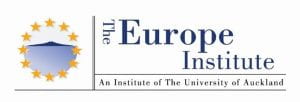By Logan Carmichael
As lockdowns have been imposed across Europe and around the world as a result of the COVID-19 pandemic, the move online of traditionally in-person tasks and services has sent many countries into turmoil.
As lockdowns have been imposed across Europe and around the world as a result of the COVID-19 pandemic, the move online of traditionally in-person tasks and services has sent many countries into turmoil. In addition to a global pandemic that has swept across Europe and the world, the learning curve of moving government services online has been immense. However, Estonia has been unknowingly, though very deliberately, preparing for the digital fallout from the COVID-19 crisis for the past three decades.
Estonia, a country of 1.3 million people located on the shores of the Baltic Sea, has been deemed by UNESCO as “one of the most digitally advanced societies in the world.” The small country has been touted for its widespread internet access, stringent cybersecurity mechanisms, and digitisation of many public services. As other countries have scrambled to move online amidst COVID-19, Estonia is already ahead of the curve, having done this years earlier.
After regaining its independence from the Soviet Union in 1991, Estonia embarked on a process of nation-building, alongside crafting a new government and economy. Former President Toomas Hendrik Ilves (2006-2016) noted that Estonia could not keep up with European powers such as Germany or France in fields of “traditional infrastructure… to enhance competitiveness,” but could innovate in digital fields “where all countries were starting from scratch at the same time,” and effectively on a level playing field.
As Foreign Minister in 1996, Ilves advocated for a programme called Tiger Leap, which saw an increase in computers and internet access in Estonian classrooms, as well as teaching digital literacy. In 2000, internet access was deemed a human right in Estonia, one of the first countries in the world to do so. The country has also used e-voting since 2005. After suffering a debilitating three-week cyberattack on its government, banks, and media websites in 2007, Estonia strengthened both cybersecurity mechanisms and its resolve to stay the course as a digital society.
The idea of the Estonian identity card emerged in the 1990s, and was approved with the passage of the same legislation that declared internet access a human right in 2000. It was not until 2010, however, that the first identity cards were issued. After a few incarnations of the identity card, its current iteration contains a chip to carry embedded files, and uses public key encryption, so the card provides definitive proof of ID, as well as a verified digital signature. It can be used for a multitude of purposes: national health insurance, access to medical records and prescriptions, e-voting, submitting taxes, and as legal ID for travel and banking. This identity card is a mandatory ‘document’ in Estonia; as a result, nearly 98% of the Estonian population uses one.
It is estimated that the identity card saves the average Estonian five days per year with the ability to make digital signatures, avoiding the associated time and effort of signing documents in-person. There are approximately 5000 e-services available to those with an identity card. Notes Ilves: Estonians “haven’t had to go anywhere, to any office, to stand in line,” as a result of the ease of accessing this multitude of services. Marriage, divorce, and real estate transactions are the only three events requiring actual in-person presence.
A security threat that would have affected an estimated 750,000 card holders was discovered in 2017, but a quick response consisting of robust testing and re-development of e-services took place before any sizeable damage was done. This much smaller, ‘short-lived’ crisis provided the chance to adjust and improve before a crisis the magnitude of COVID-19 struck.
Estonia’s innovations have become a lesson in the digitisation of government services that other countries have sought to emulate. e-Estonia, which refers to the overarching movement of service digitisation, but is also a government-supported innovation hub in Tallinn, advertises itself as “essential, exciting, exportable.” It has attempted to do the latter of the three, providing workshops in places like Ukraine and Turkey, while hosting delegations from over 130 countries at its Estonian office. Ilves has personally assisted the government of Greece in planning to digitise its public administration.
Last month, the World Health Organisation (WHO) announced it planned to adopt X-Road, Estonia’s data infrastructure platform, to digitise its exchange of health data. As countries – and evidently, even global organisations – move online amidst the COVID-19 pandemic, Estonia is offering digital solutions to do so rather seamlessly.
Estonia’s first case of COVID-19 was diagnosed on 27 February 2020, having arrived in the country from Turkey, via a bus from Latvia. By 12 March, the country’s borders were closed and a state of emergency was declared. Physically, Estonia effectively shut down, but all of its government services, amongst other e-services, remained fully accessible, as they had been available via the identity card all along.
The COVID-19 pandemic has not been a linear, nor easy experience in Estonia. To date, the country has seen 1,981 COVID-19 cases, and 69 deaths. Lockdown compliance has also proven a major issue: in April, the University of Tartu in southern Estonia faced an outbreak resulting from a party in a dormitory held against lockdown protocol. On Saaremaa island in western Estonia, hit particularly hard by COVID-19, protests took place against ongoing restrictions. By 15 May, however, there was a lifting of travel restrictions as Estonia formed a ‘Baltic Bubble’ with its neighbours, Latvia and Lithuania. Restrictions are expected to continue to be lifted gradually.
With its technologies and digital innovations being adopted by the likes of the WHO, as well as other European governments, Estonia is clearly doing something right. A recent Atlantic article suggested that even the United States could gain from digitising like Estonia has. For the US, as with other countries, obvious size, financial, and other resource-related constraints mean that this transformation cannot be full or immediate. However, embarking on a longer-term journey of digitisation, and even incorporating just a portion of the lessons in digitisation that Estonia has offered could significantly lessen the struggles of future pandemics or crises.
For more information on COVID-19, head to the Ministry of Health website.
Logan Carmichael is a Professional Teaching Assistant in the European Studies department at the University of Auckland. She is a graduate of the Masters of Conflict and Terrorism Studies programme, with a research focus on politics, military and cybersecurity in Estonia and the wider Eastern Europe.
This article is published as part of a series commissioned by the Europe Institute at the University of Auckland.
For more on the Europe Institute, click here.
Disclaimer: The ideas expressed in this article reflect the author’s views and not necessarily the views of The Big Q.
You might also like:
Is German creativity, solidarity and the odd Berlin graffito an answer to COVID-19?
How did Czechs wear face masks when there weren’t any available?


